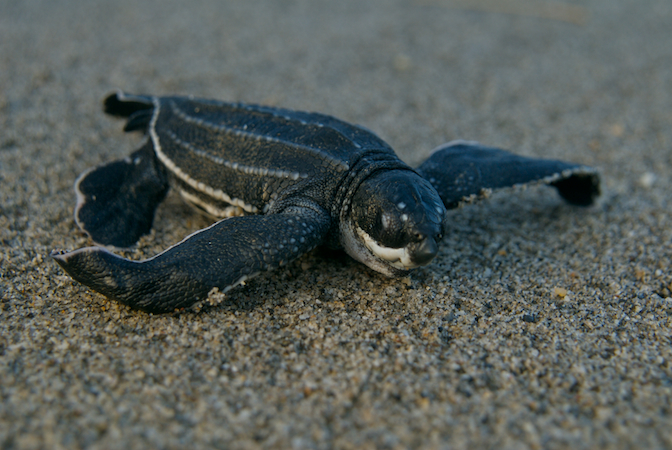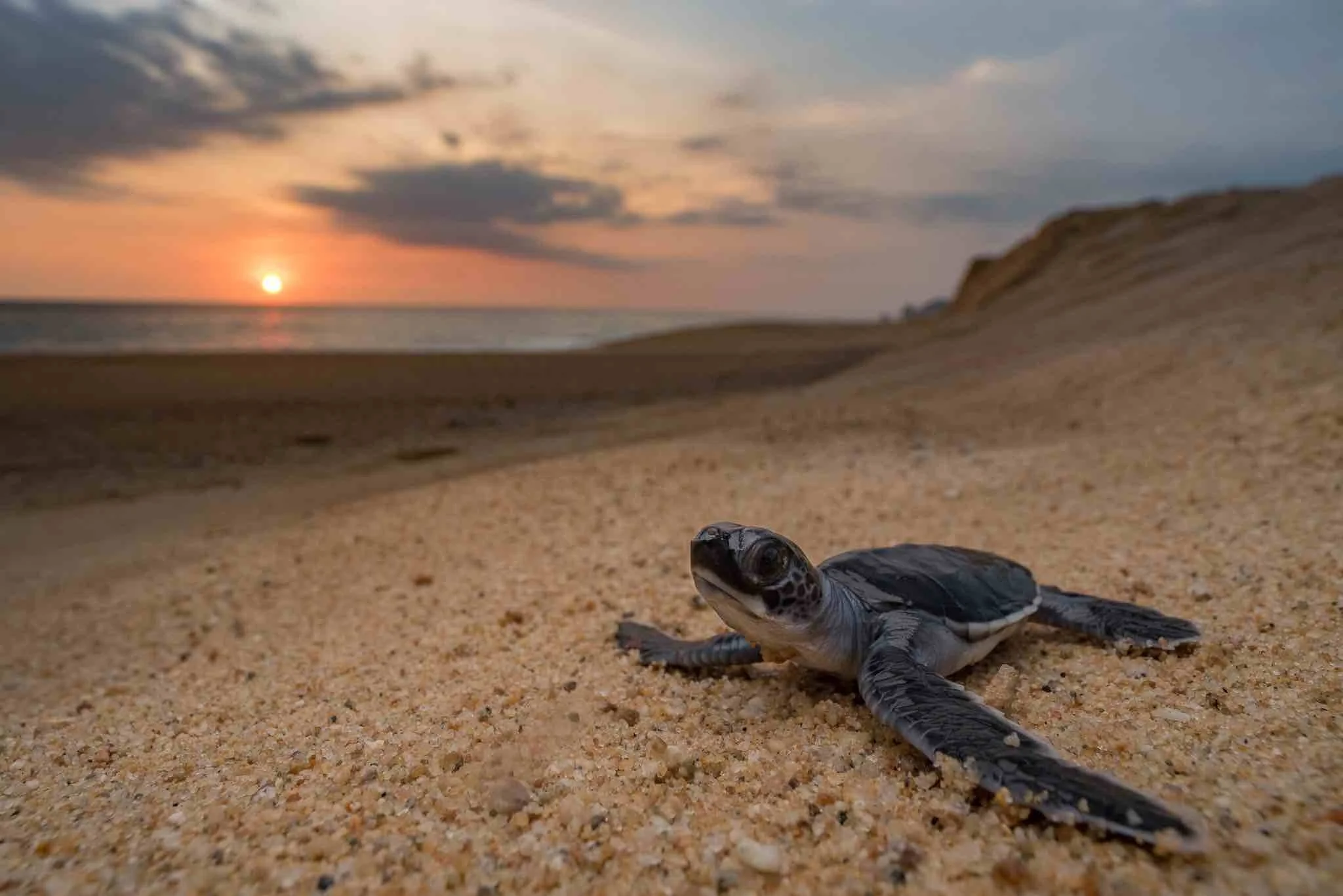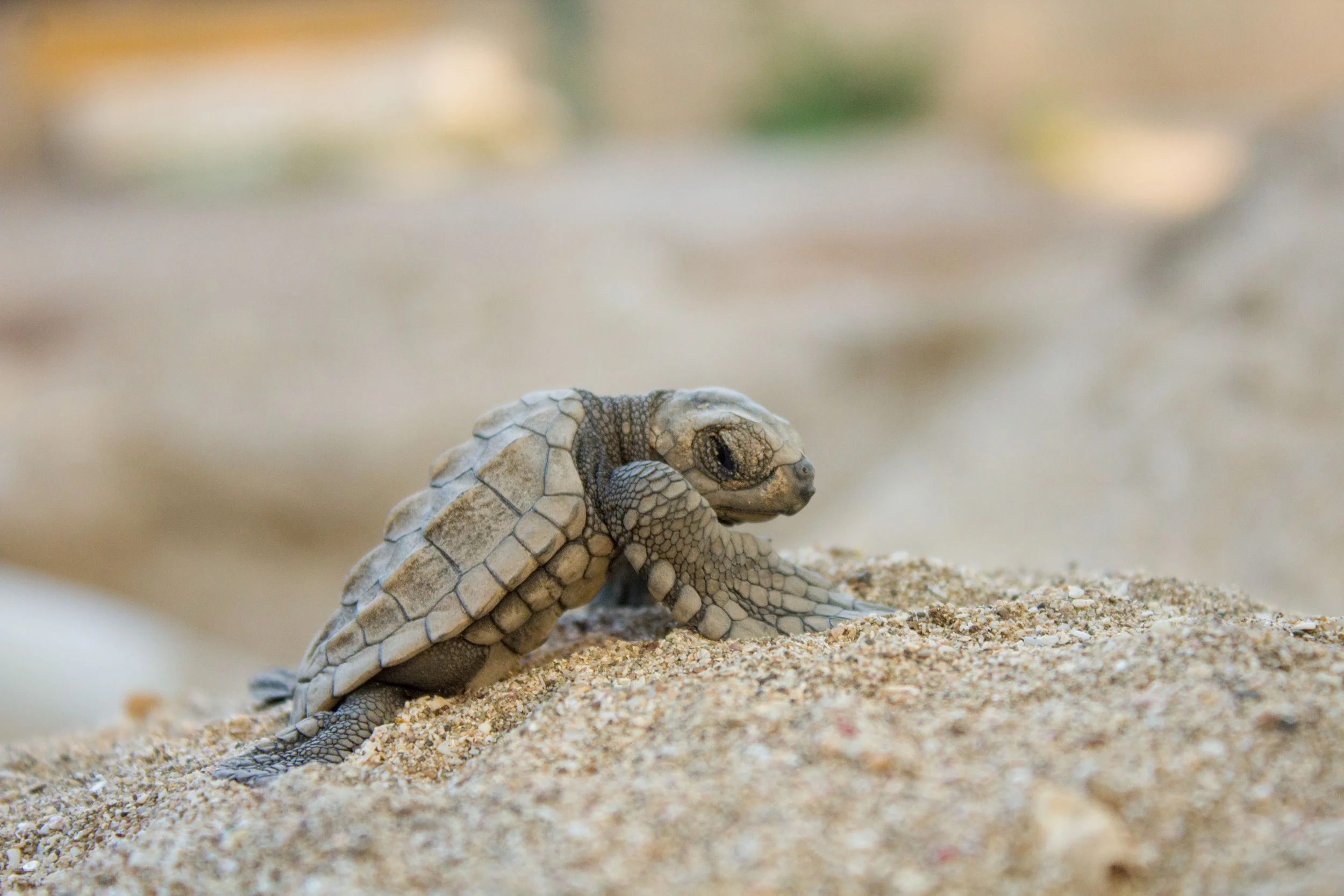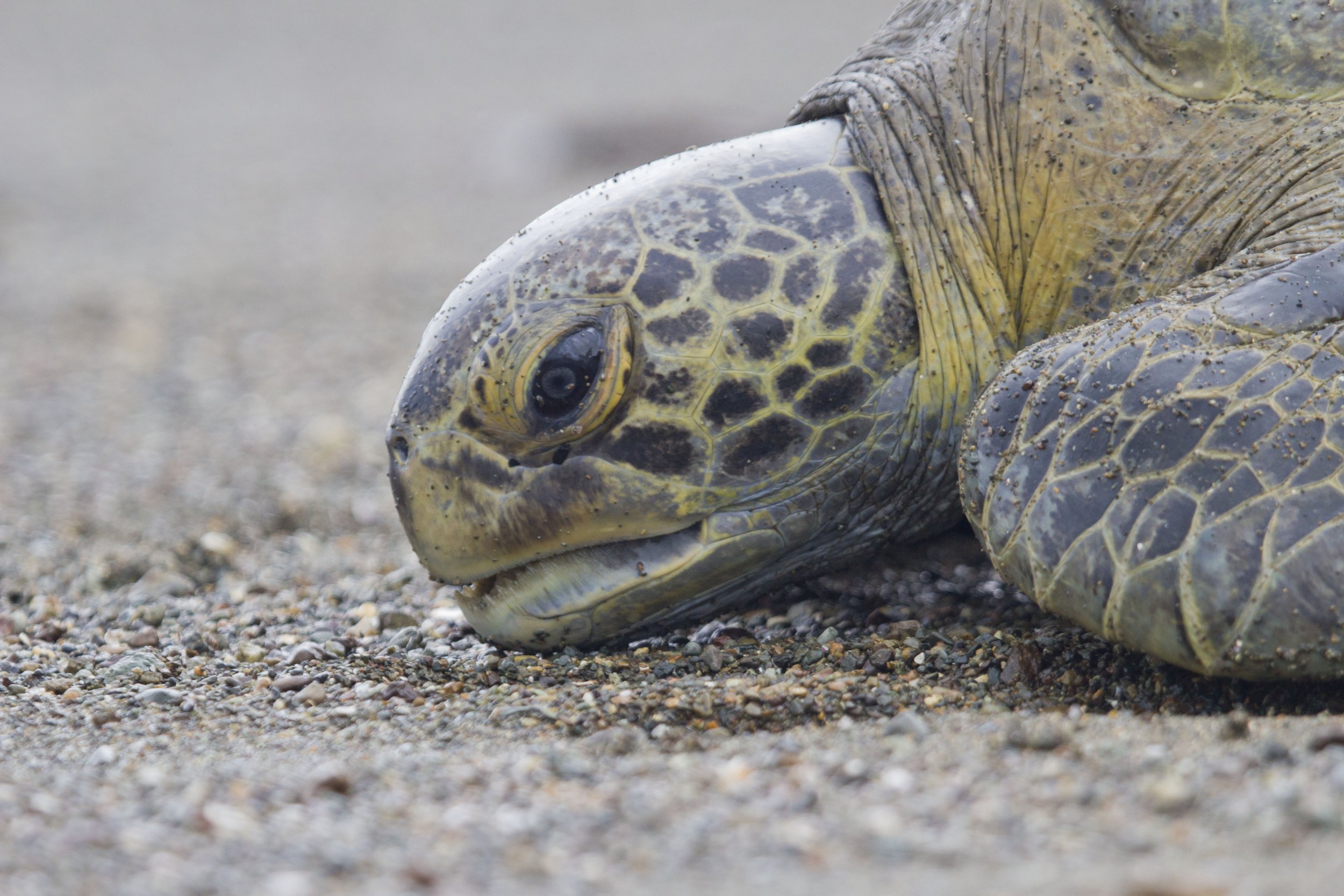
Baby Sea Turtles
Watching a baby turtle (known as a "hatchling") struggle out of the nest and make its way to the water is an emotional experience. Everything from footprints to driftwood and crabs are obstacles, though this gauntlet is important for its survival. Birds, raccoons, and fish are just a few of the predators these vulnerable creatures face; some experts say only one out of a thousand will survive to adulthood under natural conditions.
After an adult female sea turtle nests, she returns to the sea, leaving her nest and the eggs within it to develop on their own. The amount of time the egg takes to hatch varies among the different species and is influenced by environmental conditions such as the temperature of the sand. The hatchlings do not have sex chromosomes so their gender is determined by the temperature within the nest.
Baby Sea Turtle Facts
It's estimated that only 1 in 1,000 hatchlings will survive to adulthood.
Sea turtle hatchlings eat a variety of prey including things like molluscs and crustaceans, hydrozoans, sargassum sea weed, jellyfish, and fish eggs. Unfortunately, hatchlings also mistake garbage and objects like tar balls as food and ingest them.
Leatherback and flatback hatchlings are significantly larger than other sea turtle species.
Leatherbacks are pelagic (open water) even as hatchlings and their larger size helps maintain their temperature.
Hatchlings use the natural light horizon, which is usually over the ocean, along with the white crests of the waves to reach the water when they emerge from the nest. Any other light sources such as beachfront lighting, street lights, light from cars, campfires etc. can lead hatchlings in the wrong direction, also known as disorientation.
Once out of the nest, hatchlings face many predators including ghost crabs, birds, raccoons, dogs, and fish.
Many scientists are concerned that rising global temperatures will result in warmer sand, causing more female than male baby turtles. Learn more information about the effects of global warming on sea turtles.
The Pivotal Temperature of a Baby Turtle
Whether hatchlings are male or female depends on the temperature where they are in the nest, known as the “pivotal temperature." The temperature varies slightly among species, ranging between roughly 83-85 degrees Fahrenheit (28-29 degrees Celsius), at which embryos within a nest develop into a mix of males and females. Temperatures above this range produce females and colder temperatures produce males.
After 45 to 70 days (depending on the species), the hatchlings begin to pip, or break out of their eggs, using a small temporary tooth located on their snout called a caruncle. Once out of their eggs, they will remain in the nest for a number of days. During this time they will absorb their yolk, which is attached by an umbilical to their abdomen. This yolk will provide them the much-needed energy for their first few days while they make their way from the nest to offshore waters.
Emergence
The hatchlings begin their climb out of the nest in a coordinated effort. Once near the surface, they will often remain there until the temperature of the sand cools, usually indicating nighttime, when they are less likely to be eaten by predators or overheat. Once the baby turtles emerge from the nest, they use cues to find the water including the slope of the beach, the white crests of the waves, and the natural light of the ocean horizon.
If the hatchlings successfully make it down the beach and reach the surf, they begin what is called a “swimming frenzy” which may last for several days and varies in intensity and duration among species. The swimming frenzy gets the hatchlings away from dangerous nearshore waters where predation is high. Once hatchlings enter the water, their "lost years" begin and their whereabouts will be unknown for as long as a decade. When they have reached approximately the size of a dinner plate, the juvenile turtles will return to coastal areas where they will forage and continue to mature.
What is SEE Turtles?
We're a nonprofit organization that protects sea turtles through conservation travel and volunteer tours, our Billion Baby Turtles, Too Rare To Wear, & Sea Turtles & Plastic programs, our education programs, and by promoting inclusivity in the sea turtle community. Our award-winning programs help save sea turtle hatchlings on important nesting beaches around the world, work with the tourism industry to end the turtleshell trade, and get plastic out of sea turtle habitats. Learn more about our organization.
Photo credits: Neil Ever Osborne, Solvin Zankl/Wild Wonders of Europe, Hal Brindley




